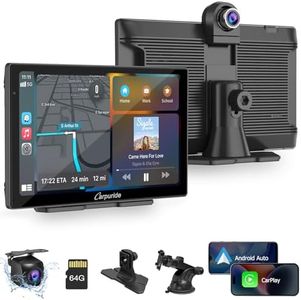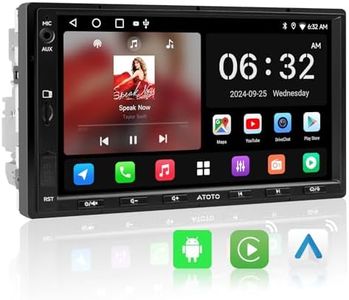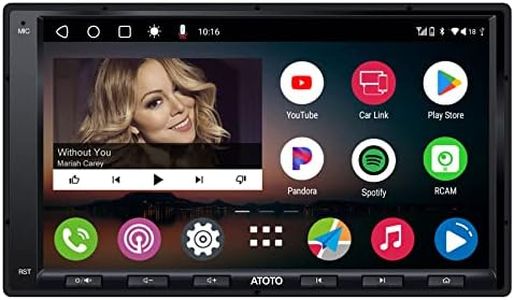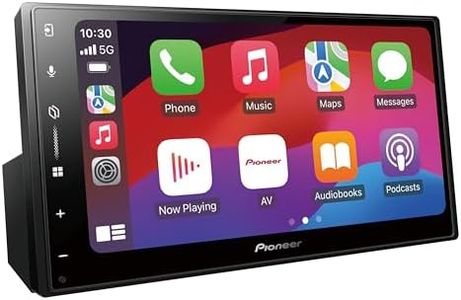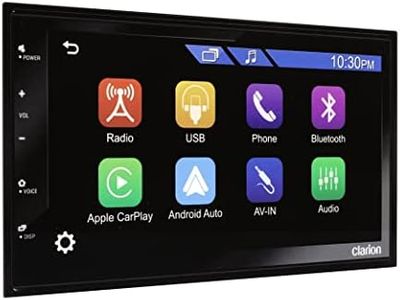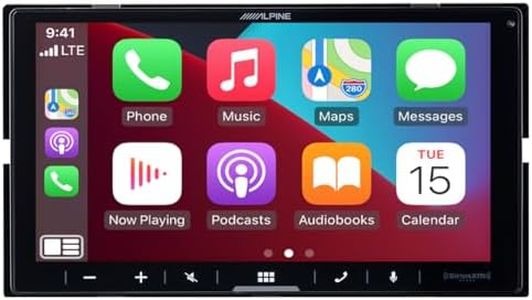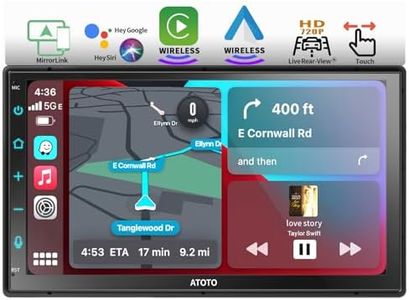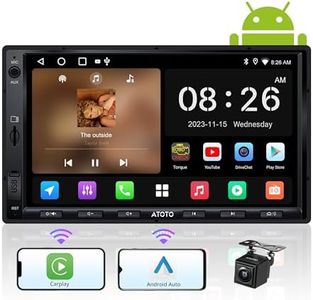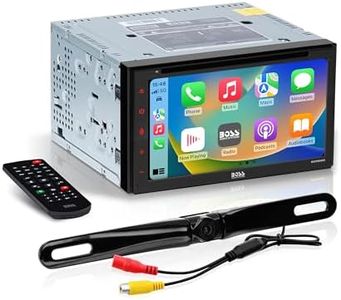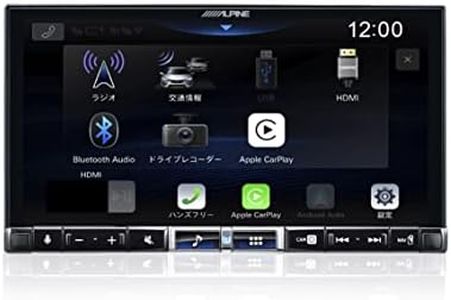We Use CookiesWe use cookies to enhance the security, performance,
functionality and for analytical and promotional activities. By continuing to browse this site you
are agreeing to our privacy policy
10 Best Android Auto Head Units
From leading brands and best sellers available on the web.Buying Guide for the Best Android Auto Head Units
Choosing the right Android Auto head unit for your car can make a big difference in your driving experience. The right unit not only adds convenience but can also improve safety, navigation, and entertainment on the road. To find the best fit for you, it’s important to understand and compare the key features that matter most. Always think about how you’ll be using the device day to day and match the specs to your needs—not just what looks best on paper.Display ResolutionDisplay resolution determines how sharp and clear the screen looks. Higher resolutions provide more detailed images, making it easier to read maps or see album art. Head units can range from basic resolutions (like 800x480) to full HD (1920x1080) and beyond. Standard resolution is fine for basic use or those focused on audio, while higher resolution is better for users who rely on map apps or want a visually impressive system. Pick a higher resolution if you value clarity and spend a lot of time looking at the screen.
Connectivity OptionsConnectivity options include things like USB ports, Bluetooth, Wi-Fi, and even support for wireless Android Auto. These determine how you connect your phone, play music, or use other features. Wired connections are generally more stable and reliable, while wireless Android Auto adds convenience by letting you connect your phone without plugging it in. Consider your preferred way of connecting devices—wireless is better if you want minimal cable fuss, while those who don’t mind plugging in can choose wired-only models. Also, look for additional ports if you have other devices or want future expandability.
Audio Output QualityAudio output quality relates to how well the head unit reproduces sound. Specs might include things like amplifier power, equalizer settings, and supported audio formats. If you’re an audiophile or just love great-sounding music, look for units with higher output power (measured in watts) and features like built-in audio tuning or support for lossless audio. More basic systems are fine if you only use radio or basic streaming. Match this spec to your expectations for sound quality in your car.
Operating System and UI ResponsivenessThe speed and ease of use of the Android Auto head unit depend on both the operating system version and the hardware’s responsiveness. Some units use faster processors and more memory (RAM), which means smoother navigation through menus and quicker app launches. Systems with older hardware or outdated software may lag or fail to support newer features. If you’re a heavy user juggling navigation, streaming, and messaging, choose a unit praised for smooth performance; more casual users may get by with simpler, less resource-intensive versions.
Compatibility and Installation SizeHead units come in different sizes, most commonly single DIN and double DIN, which refer to the height of the unit and how it fits into your vehicle’s dashboard. It’s important to check what size your car supports before you buy. Single DIN is narrower and fits older or smaller dashboards, while double DIN units allow for larger screens and more features but require more space. Choose the one that matches your car’s compatibility and your preference for screen real estate.
Integration with Car FeaturesSome Android Auto head units offer integration with your car’s existing controls, such as steering wheel buttons, backup camera, or parking sensors. This integration makes it safer and more convenient to use the head unit without losing access to factory features. Check which car functions you want to keep and verify that the head unit you choose will support them, especially if you rely on those features regularly.
